Adaptability.
Finally, the inventory talks about adaptability.
The ANC talks about mental modes with which we act and think. We have two ways of thinking.
The first way of thinking is thinking with the automatic mental mode that manages the known and the mastered. It knows how to do things. It has already learned. This is our library of behavioral responses in a way.
In daily and professional life, we use most of the time our automatic mode to trigger quick actions and reactions to routine situations.
For example, an industry leader facing a problem will adopt known, effective problem solving modes to find the right solution to his problem quickly.
This automatic mental mode is mobilized whenever an event is perceived as simple and/or known.
The automatic mental mode requires little attention or concentration. It applies quick and generic answers.
However, it has the shortcomings of its qualities: it is rigid and not very conducive to change and individualization. If this mode perseveres when it is not adapted to the situation, stress is triggered.
The second way of thinking is thinking with the adaptive mental mode, which deals with the new, the unknown, the uncontrolled, the complex. He takes the experiences of daily life and asks himself what he is going to do with them.
A business leader in the retail sector is faced with a sudden drop in sales and the departure of some large customers. If he wants to achieve his objectives, he must find new solutions and act differently to restore the sales situation. Revenues already used may not be the best answer to the problem.
The adaptive mental mode is flexible and is spontaneously mobilized when we perceive an event as unknown or complex.
It allows access to nuance, logic and intuition.
It makes it easier to take a step back and take height.
It allows a better adaptation to events and thus helps to reduce stress. Most of the time the change of mental mode is spontaneous according to the needs of the moment but our subjective perception of the event frequently influenced by cultural conditioning where our personal beliefs can facilitate or on the contrary prevent this process of switching between mental modes.
The real challenge is to learn to perceive which mode we are operating in at a given moment, to identify the warning signals and finally to know how to switch from one mode to another quickly and efficiently if necessary.
We use this inventory at the beginning of our leadership development program. This inventory is subject to a personalized debriefing with our profil’INC expert.


